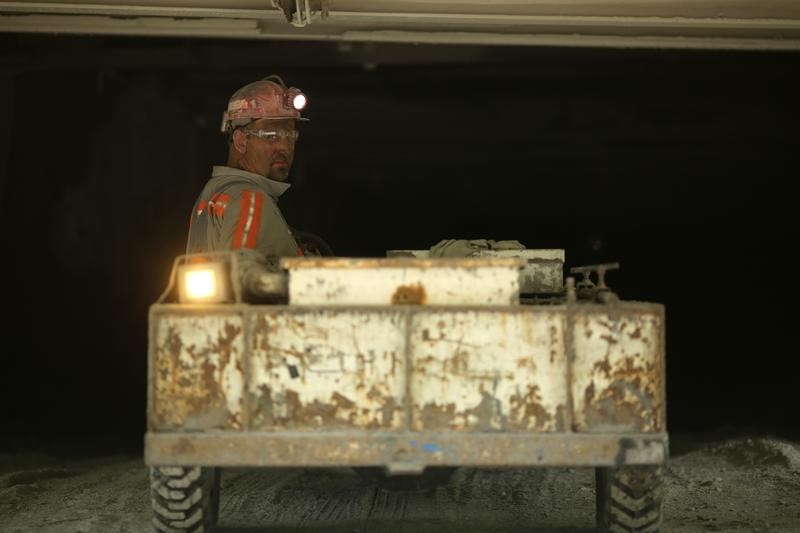By Clyde Russell
LAUNCESTON, Australia, March 28 (Reuters) - Recent price gyrations for iron ore in China caused by swings in sentiment over U.S. President Donald Trump's tariffs on steel are masking a broader downward trend.
In recent days spot iron ore prices in the world's largest importer have alternated between slumping as trade war fears mount, or rallying as these same fears moderate.
The price action is being driven by the news cycle and the seeming chaotic way in which the Trump administration is implementing its trade policies.
The spot price at China's Qingdao port for 62 percent iron ore MT-IO-QIN62=ARG , as assessed by Argus Media, rose 0.6 percent on Tuesday to close at $63.90 a tonne, while the price for the same grade as assessed by Metal Bulletin .IO62-CNO=MB rose 1.3 percent to end at $65.17.
On the Dalian Commodity Exchange, benchmark iron ore futures DCIOcv1 increased 1.1 percent to close at 443.5 yuan ($70.73) a tonne, while Shanghai steel rebar futures SRBcv1 gained 1.5 percent to 3,413 yuan.
These small gains came amid signs that the Trump administration and the authorities in Beijing may be prepared to sit down and negotiate to avoid a trade war.
Chinese Premier Li Keqiang told visiting U.S. lawmakers on Tuesday that Beijing is working towards dialogue with the United States on trade but is prepared for a trade war, state television reported. gains also came as another country, South Korea, appeared to reach a deal to avoid the implementation of the Trump administration's tariffs of 25 percent on steel imports and 10 percent on aluminium.
A pattern seems to have emerged since Trump first announced the planned tariffs on March 2, in which prices for the targeted commodities first decline on the initial news, then recover somewhat as it becomes clearer that the United States will provide exemptions to certain nations.
But it's also important to note that prices don't recover nearly as much as they slump.
Spot iron ore was at $79.55 a tonne on March 1, the day before Trump's announcement, after which it fell for 11 straight days to end at $69.80 on March 12.
A recovery over the next few days saw it end $71.65 a tonne on March 15, before starting to fall again, this time dropping to $66.90 on March 20.
A small increase to $68.15 a tonne on March 22 was ended by Trump's announcement of planned tariffs on some $60 billion of Chinese goods, which sparked the retreat to $63.50 on March 26, a four-month low.
IRON ORE TURNS BEARISH
While it's easy to be caught up in the daily news cycle, especially given the dramatic nature of the twists and turns of Trump's announcements and subsequent developments, it should not distract from the overall picture.
Spot iron ore prices have effectively been in retreat since late February, and are down 20 percent since the peak on Feb. 26.
A combination of a well-supplied market and some easing of optimism over China's steel demand, as well as record high inventories at Chinese ports, have contributed to the overall bearish market.
At last week's Global Iron Ore and Steel Forecast Conference in Perth, a poll of the participants found that the average price forecast for 2018 was around $65 a tonne.
An average price of $65 for 2018 suggests that the price may be below that level for some time during the year, given it has spent most of the first quarter above the forecast.
The majority of the delegates were either iron ore miners, contractors or traders, with not many buyers in evidence, meaning that those making the forecasts stood to benefit most from higher prices.
The modest price forecast suggests that the industry is bracing itself for tougher times, without expecting a collapse in demand.
This reflects the view that China's steel demand will be relatively stable this year, and output likely to remain near the 831 million tonnes seen in 2017.
(Editing by Richard Pullin)
